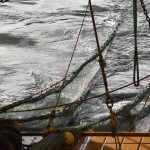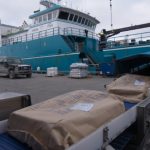As a result of the first 12 months of a three-year research program on Mandurah’s crabs the catches increased by both recreational and commercial fishers. The result also shows a significant change in the methods that recreational crabbers use to catch them. Department of Fisheries Senior Research Scientist Dr Danielle Johnston told that the latest data had revealed a 70 percent increase in boat-based catch by recreational fishers, but significant drops in both shore-based scoop net and drop-net catches, since a survey a decade ago.
Dr Johnston also informed that boat-based catches of blue swimmer crabs now account for 85 percent of the recreational fishing, with only 11 percent of fishers using scoop nets close to shore, 2.4 percent using drop nets from jetties and 1 percent fishing from canals and house boats.
It is said that as per the latest data 357 tonnes of crabs were fished by the recreational sector in 2007/08 (compared with 289 tonnes in 1998/99) and that the commercial sector harvested 90 tonnes (compared with 64 tonnes in 1998/99) so the relative take, or proportion, for both sectors remains at approximately 80:20 but the annual catch has risen by 94 tonnes.
Dr Johnston explained that the majority of fishers that accessed the Peel-Harvey region’s iconic crab fishery now lived in the local area, whereas a decade ago the majority of crab fishers lived in the Perth metropolitan area and travelled to Mandurah to go fishing. Since November 2007 recreational fishers have had a daily bag limit of 10 crabs per person and a boat limit of 20 crabs right across West Coast Bioregion (from Black Point, east of Augusta, to the Zuytdorp Cliffs, north of Kalbarri).








